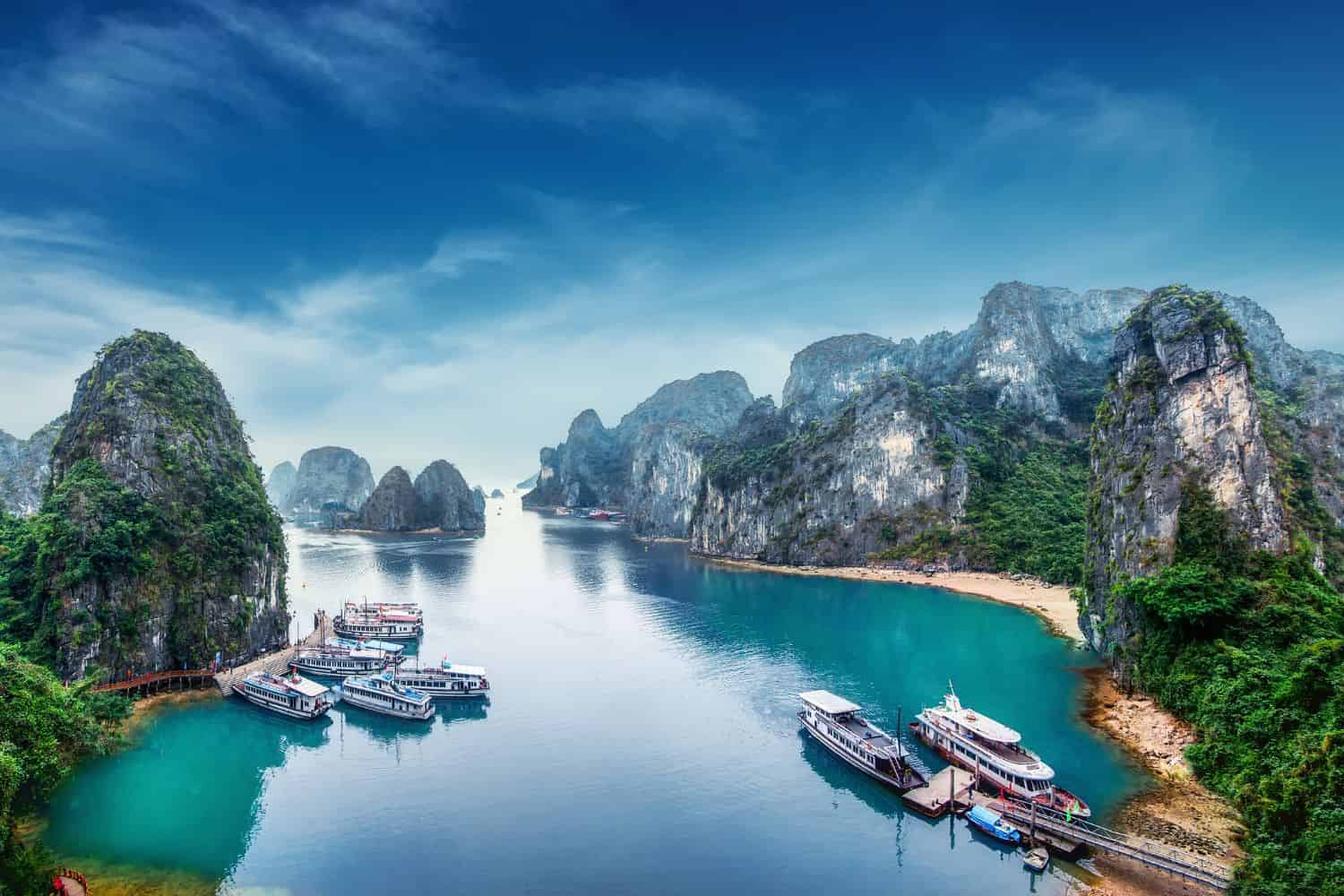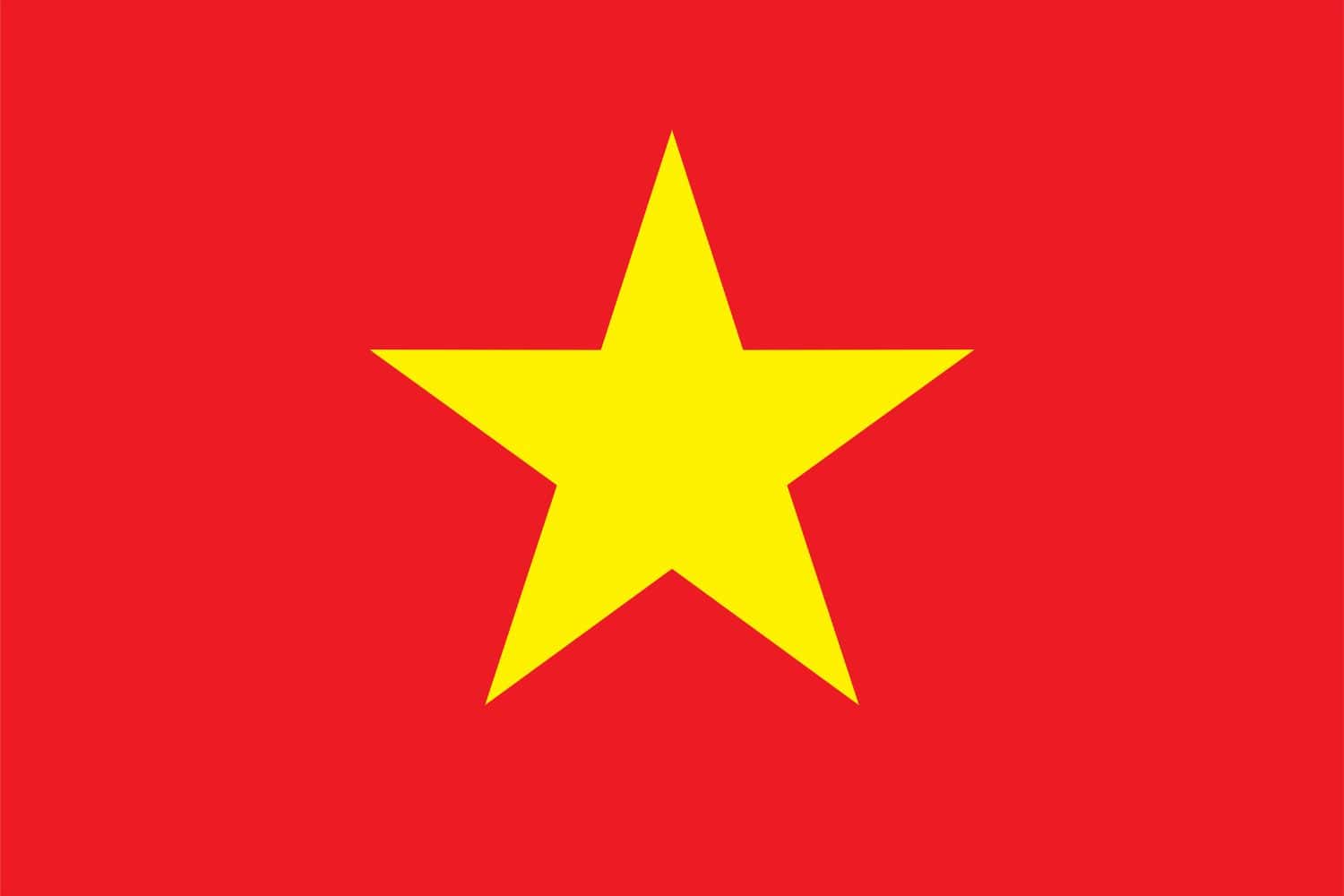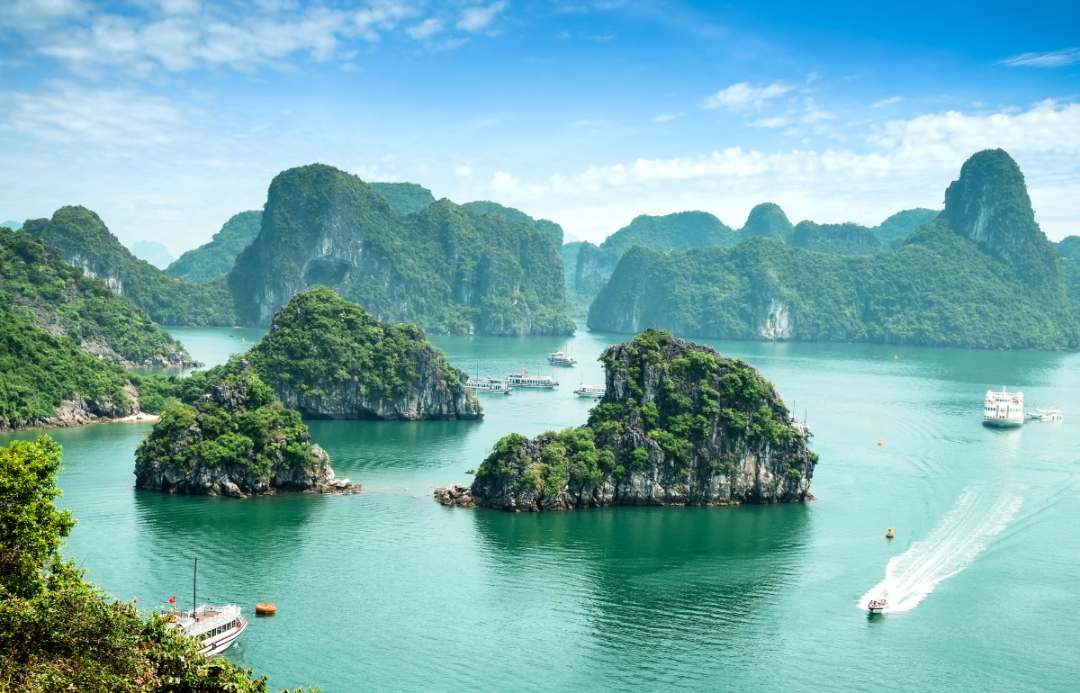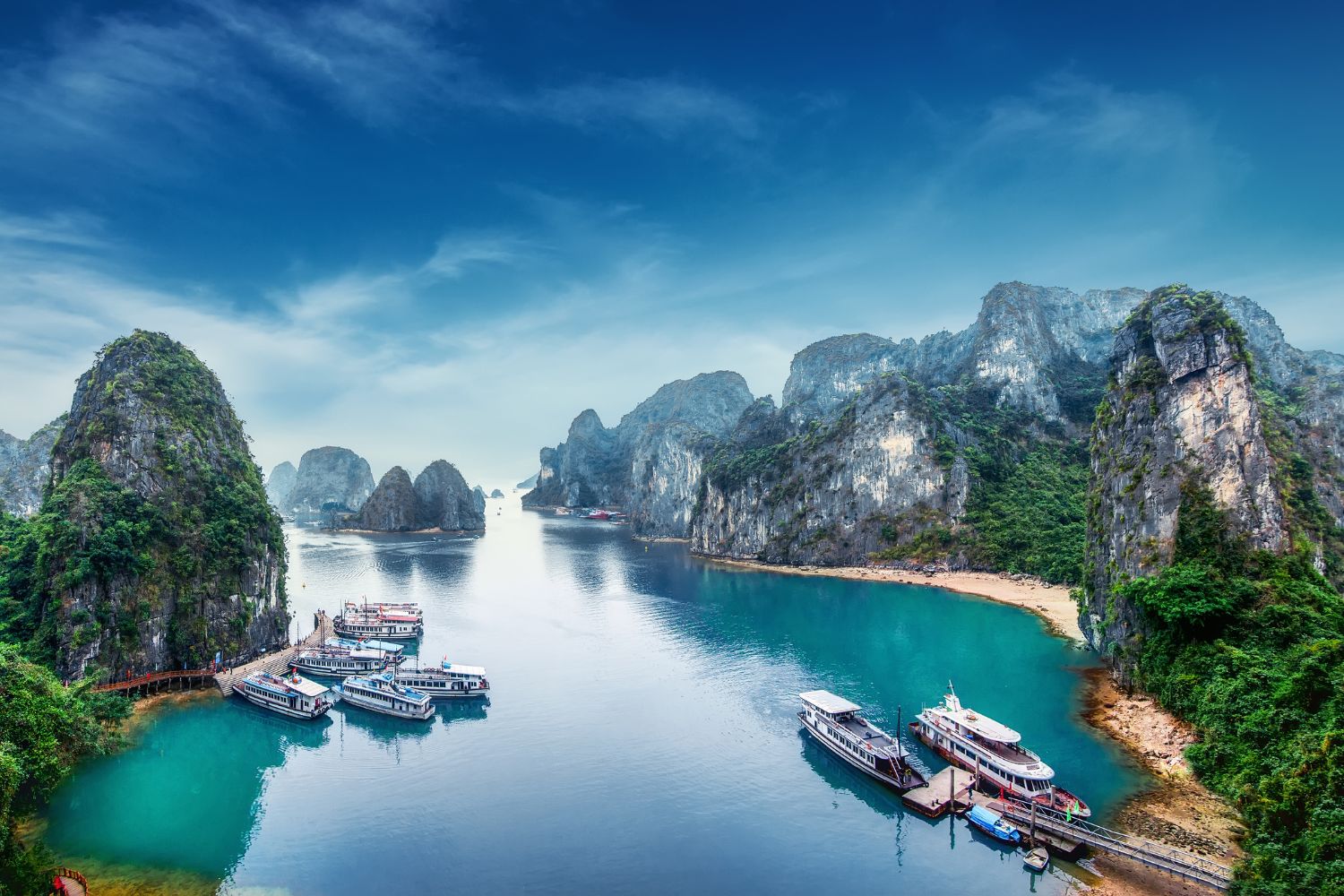The geography of Vietnam is a captivating blend of diverse landscapes and historical significance. Located in Southeast Asia, this nation’s geographic location has played a pivotal role in shaping its history and cultural identity.
Positioned on the eastern edge of the Indochina Peninsula, Vietnam geography beckons adventurous travelers with its sprawling rice paddies, majestic Trường Sơn mountains, and pristine coastal regions. From exploring the mystical terraces of Sapa to uncovering the cultural tapestry of Hanoi, Vietnam’s diverse landscapes and rich history offer an unforgettable journey for intrepid tourists seeking a unique and enriching experience.
Vietnam physical geography paints a picture of awe-inspiring natural masterpieces. From the stunning limestone pillars of Ha Long Bay, representing the nation’s rich karst heritage, to the diverse ecosystems that span from the lush Mekong Delta to the hilly highlands, Vietnam stands as a testament to nature’s grandeur.
Top Geographic Features of Vietnam
- Hoàng Liên Son Mountain Range: This majestic mountain range, located in the northwest of Vietnam, is home to Fansipan, the highest peak in Indochina.
- Red River: One of Vietnam’s major rivers, the Red River flows through the northern part of the country, providing essential water resources for agriculture and irrigation.
- Mekong Delta: Located in the southernmost part of Vietnam, this vast and fertile region is crisscrossed by numerous rivers and canals and is crucial for the country’s rice production.
- Central Highlands (Tây Nguyên): Found in the south-central part of Vietnam, this plateau is characterized by its dense forests, coffee plantations, and unique indigenous cultures.
- Hạ Long Bay: Located in the northeastern part of Vietnam, this bay features thousands of limestone karsts and isles rising dramatically from the sea, making it one of Asia’s most famous natural attractions.
- Phong Nha-Kẻ Bàng National Park: Located in north-central Vietnam, this park is known for its impressive limestone landscapes and its vast cave systems, including the renowned Sơn Đoòng Cave.
- Sài Gòn River: An important river in southern Vietnam, the Sài Gòn River plays a vital role in transportation and trade for the bustling metropolis of Ho Chi Minh City.
- Cát Bà Island: Part of the Hạ Long Bay archipelago, this island is known for its rugged landscapes, sandy beaches, and the endangered Cát Bà langur.
- Da Nang’s Marble Mountains: Situated near the central city of Da Nang, these five limestone and marble hills house numerous caves, tunnels, and Buddhist sanctuaries.
- Cửu Long River (Mekong River): Flowing through the south of Vietnam, this major river and its delta are of immense importance to the livelihoods of millions, supporting rich biodiversity and extensive agricultural activities.
Vietnam geographic features play a crucial role in shaping Vietnam’s landscape, climate, and cultural history, making them essential elements in defining the country’s geography.
Vietnam Geography
Exploring the Vietnam National Geographic canvas reveals an astonishing array of geographic features. From the towering Truong Son (Annamite) mountains to the fertile Mekong Delta and the historic regions of Hue, the country displays a mesmerizing tapestry of natural wonders.
- Mountain Ranges – The Crown of Diversity: Much like documentaries that showcase prominent mountain ranges, Vietnam is proud of its Truong Son range. These verdant peaks not only heighten the country’s scenic beauty but also harbor unique biodiversity and have molded its cultural identity.
- Lakes – A Kaleidoscope of Colors: Vietnam’s Ba Be National Park, with its serene freshwater lakes, mirrors the breathtaking landscapes captured in photographs. These pristine lakes, embraced by forests and mountains, reflect the region’s geological richness.
- Mekong Delta – The Rice Bowl of Vietnam: Just as documentaries portray vast landscapes, Vietnam’s Mekong Delta reveals fertile plains that sustain countless lives. This lush region narrates tales of traditional farming and the country’s agrarian might.
- Historical Sites – Unveiling the Past: Vietnam’s historical sites, such as the ancient town of Hoi An, resonate with tales of journeys that unearth past civilizations. These vestiges bear witness to the country’s rich historical tapestry.
- Ethnic Diversity – A Cultural Melting Pot: In a manner reminiscent of the National Geographic’s emphasis on varied cultures, Vietnam is a blend of ethnic groups, including Kinh, Tay, and Hmong communities. Each group offers distinct traditions, languages, and customs, weaving a colorful cultural fabric.
- Wildlife – A Sanctuary for Nature: Vietnam’s protected areas, like the Cuc Phuong National Park, reflect the emphasis on wildlife conservation. These sanctuaries provide vital habitats for diverse species, conserving biodiversity in a myriad of environments.
- Geological Marvels – A Natural Showcase: The country’s geological wonders, like the famous Halong Bay with its limestone pillars, illustrate Vietnam’s natural allure against the backdrop of the Gulf of Tonkin. Such formations highlight the intricate interplay of nature’s elements.
- Remote Exploration – Uncharted Territories: The remote highlands of Sapa beckon trekkers and explorers, reminiscent of journeys into unseen terrains. This elevated region provides insights into untouched landscapes and distinct ecosystems.
Vietnam’s geographic features are characterized by the profound influence of the Truong Son mountain range. These green peaks, which span the western boundary of the country, set a magnificent stage for Vietnam’s diverse landscapes. The historic Ho Chi Minh Trail, once a strategic military route, snakes its way through these dense mountains, connecting different parts of the country.
Serpentine rivers, like the Red River and the Mekong, meander through Vietnam’s landscapes, essential for rice cultivation and daily life. Additionally, the coastal plains and the Central Highlands contribute to Vietnam’s unique geographic identity.
Vietnam Geographic Location
Vietnam’s geographic location is very strategic, and its position has played a significant role throughout history. Located in the eastern part of the Indochina Peninsula in Southeast Asia, the country has been a nexus for trade, culture, and ideas, emphasizing its historical importance.
Borders of Vietnam
Vietnam shares borders with three countries. Here is Vietnam’s physical geography with the neighboring countries and the approximate total length of each border:
- China: The border between Vietnam and China is approximately 1,280 kilometers long, making it the longest international border for Vietnam.
- Laos: The border between Vietnam and Laos is approximately 2,130 kilometers long.
- Cambodia: The border between Vietnam and Cambodia is approximately 1,158 kilometers long.
| Vietnam Neighboring Country | Border Length (Approximate) |
|---|---|
| China | 1,280 kilometers |
| Laos | 2,130 kilometers |
| Cambodia | 1,158 kilometers |
These international borders define Vietnam’s connections to different regions and contribute to the country’s geopolitical significance as a crossroads between Southeast Asia and the neighboring countries.
Geography of Hanoi Vietnam
As the capital city of Vietnam, Hanoi is a captivating microcosm of the country’s human geography. Here, various ethnic groups, including the Kinh, Tay, Dao, and Hmong, coexist, contributing to the city’s vibrant cultural tapestry.
Hanoi, the capital city of Vietnam
- City of Contrasts: Hanoi is known for its stark contrasts, where modern skyscrapers coexist with traditional Old Quarters, creating a unique blend of old and new.
- Red River: The Red River borders the city, playing a significant role in its trade and transportation.
- Hanoi’s Elevation: The city is located slightly above sea level, with the expansive deltas stretching out around it.
- Green Spaces: Hanoi is home to several beautiful parks and lakes, including the Hoan Kiem Lake, offering a serene escape amidst the bustling city.
- Hanoi’s Historical Significance: With a history deeply rooted in ancient times, Hanoi has witnessed various epochs and played a pivotal role in Southeast Asian politics and trade.
- Diverse Architecture: The city showcases a diverse architectural heritage, reflecting influences from Chinese, French, and modern styles.
- Traditional Music: Hanoi is rich in traditional music forms like Ca trù and Chèo, and its vibrant music culture can be seen and heard throughout the city.
- Ho Chi Minh Mausoleum: The historic Ho Chi Minh Mausoleum, located in the heart of the city, is an iconic symbol of Vietnam’s political history.
- Hanoi’s Economy: The city serves as Vietnam’s economic and cultural hub, attracting people from all over the country seeking opportunities and education.
- Population Growth: Hanoi has experienced steady population growth, with a significant influx of people from various provinces, leading to urbanization and infrastructure challenges.
Historical Geographical Importance of Vietnam
Throughout the ages, Vietnam’s geographical significance has made it a focal point for historical events. As empires and nations rose and fell, from the Chinese to the indigenous dynasties and French colonizers, Vietnam’s geographic position played a pivotal role in shaping regional and global history.
- Strategic Gateway: Vietnam’s location as a coastal country along the South China Sea has made it a strategic point for trade, cultural exchange, and military endeavors throughout history.
- Ancient Trade Routes: The maritime Silk Road passed near Vietnam, connecting various civilizations and facilitating the exchange of goods, ideas, and cultures.
- Chinese Dominance: Vietnam was under Chinese rule for nearly a millennium, an influence that deeply impacted its culture, language, and governance.
- Wars of Resistance: Throughout its history, Vietnam faced numerous invasions. During the 19th and 20th centuries, it became a symbol of resistance, first against French colonial rule and then against American intervention.
- French Colonial Era: Vietnam’s geographic position attracted French interest in the 19th century, leading to its colonization and a significant cultural influence on the nation.
- Influence of Indigenous Dynasties: Vietnam was home to various dynasties, like the Ly, Tran, and Nguyen, that shaped its early history and culture.
- Conflict with Khmer and Champa Kingdoms: Historically, Vietnam had territorial conflicts and cultural exchanges with neighboring kingdoms such as the Khmers and Chams.
- The Rice Paddies and Farmers: Vietnam’s fertile deltas, particularly the Mekong Delta, and its iconic figure of the rice farmer, have become symbols of the nation’s cultural and historical identity.
- Influence of Pho and Ao Dai: Vietnam’s unique position at the crossroads of different cultures gave rise to pho, a flavorful noodle soup, and ao dai, a traditional dress that has become emblematic of Vietnamese identity.
The geographical position of Vietnam, stretching along the eastern coast of the Indochinese Peninsula in Southeast Asia, is a fusion of natural beauty and historical depth. This narrow, elongated country is known for its diverse landscapes, ranging from the lush rice terraces and forested mountains in the north to the fertile Mekong Delta in the south. Vietnam’s extensive coastline along the South China Sea has made it a key maritime nation.
In conclusion, Vietnam’s geographical location has been integral to its history and cultural development. Its long border with China and proximity to other Southeast Asian countries have shaped its history, marked by a rich tapestry of cultural influences and historical conflicts. The country’s location along major sea routes has also made it an important player in regional trade. Today, Vietnam continues to harness its strategic position, playing a significant role in the economic and geopolitical dynamics of Southeast Asia.




